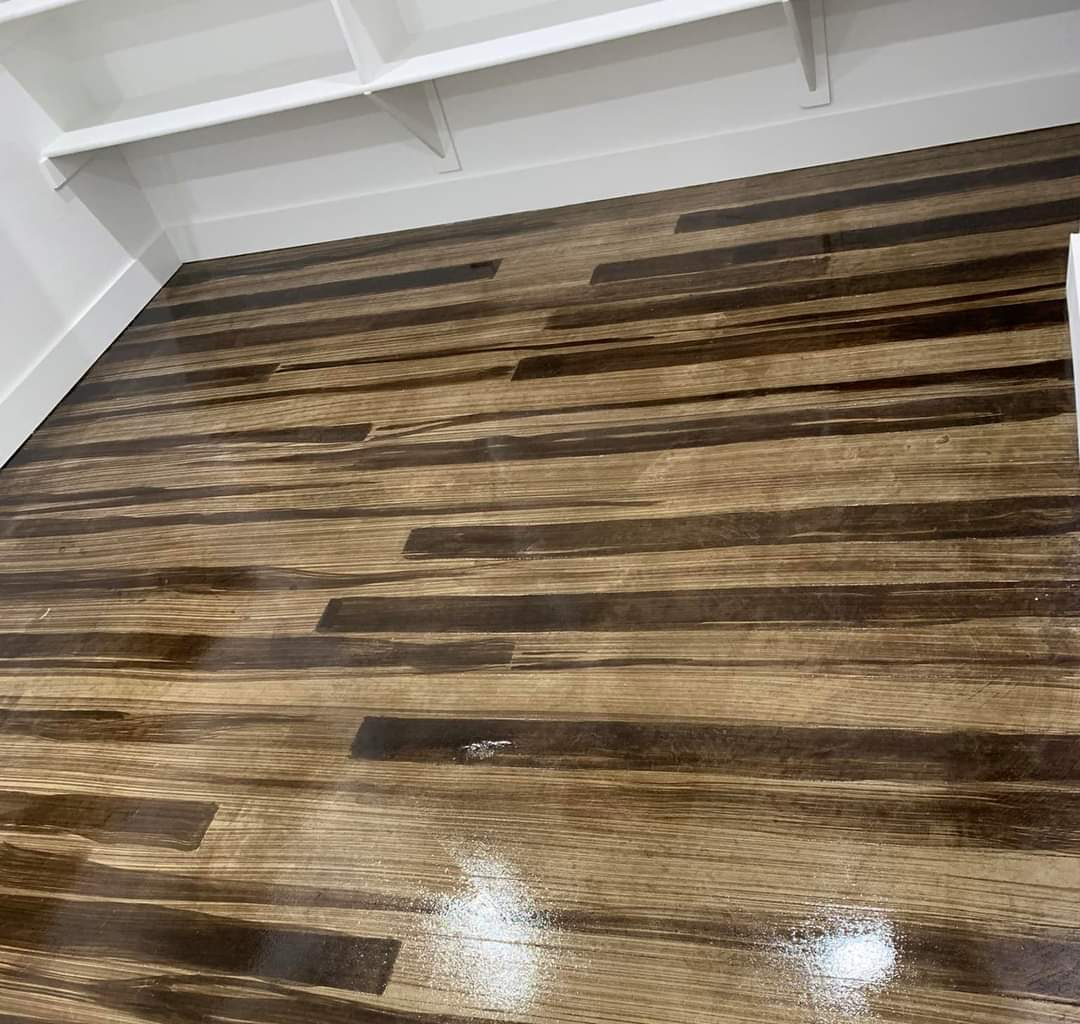Epoxy Floor Installers
Fill in your details below - we'll reach out to schedule a free quote!
We will get back to you as soon as possible
Please try again later
Local Epoxy Floor Installers
At JD Flooring, we understand that a high-quality epoxy floor is a major investment.
That's why we work with only the best local installers to ensure that your floor will be installed properly and look great for years to come.
We start by working with you to choose the perfect epoxy flooring system for your needs.
With JD Flooring, you can rest assured that your epoxy floor will be installed correctly and look amazing for years to come.
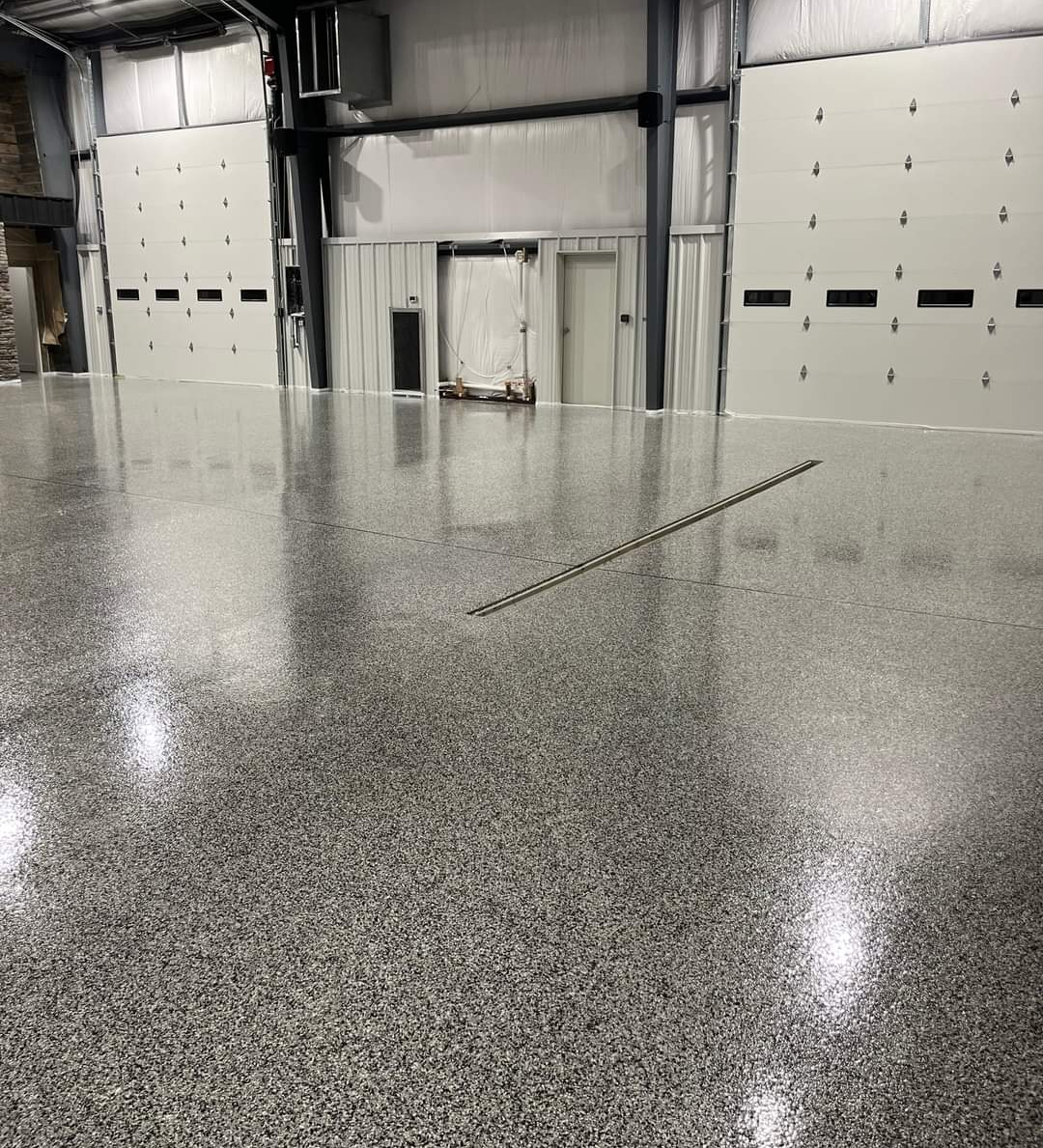
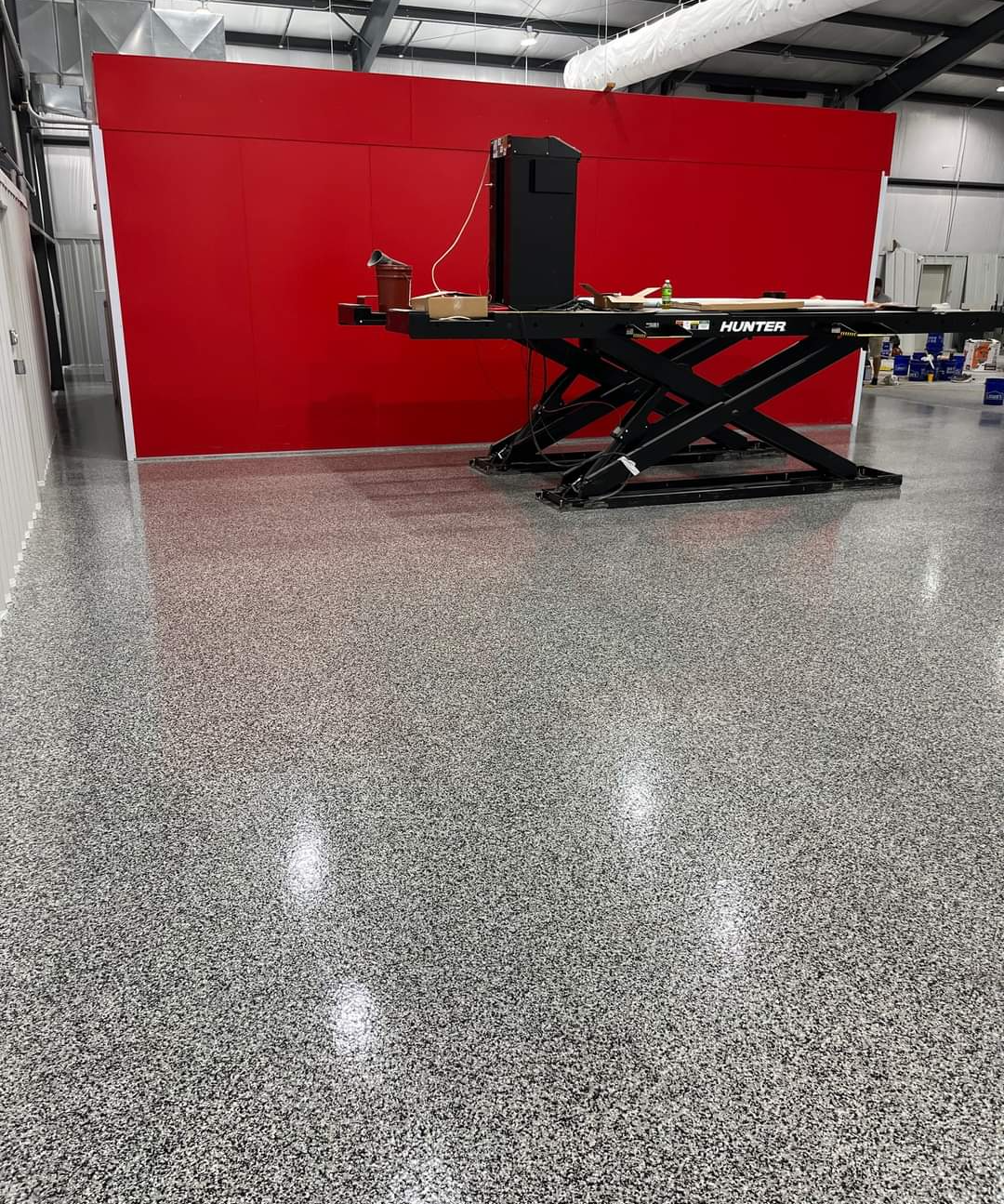
Epoxy Floor Installation Contractors
At JD Flooring, our epoxy floor installation contractors have years of experience and are licensed and insured.
Our knowledgeable staff can help you find the perfect option for your home or business.
Epoxy flooring is a durable and attractive option for a variety of applications, and our team can install it quickly and efficiently.
Whether you're looking for a new floor for your home or business, JD Flooring is the perfect place to start.
Contact us today to learn more about our services or to schedule a free consultation.
What are Epoxy Floors?
Epoxy floors are a type of flooring that consists of a raised platform with a poured-in-place epoxy surface.
Epoxy floors are extremely durable and can withstand high traffic areas. They are easy to clean and maintain, and are resistant to stains and spills.
Epoxy floors are also slip-resistant, making them ideal for areas where there is a potential for water or other liquids to be present.
Epoxy floors can be found in a variety of settings, including industrial factories, commercial kitchens, and healthcare facilities.
Although they are often associated with these types of environments, epoxy floors can also be used in residential settings.
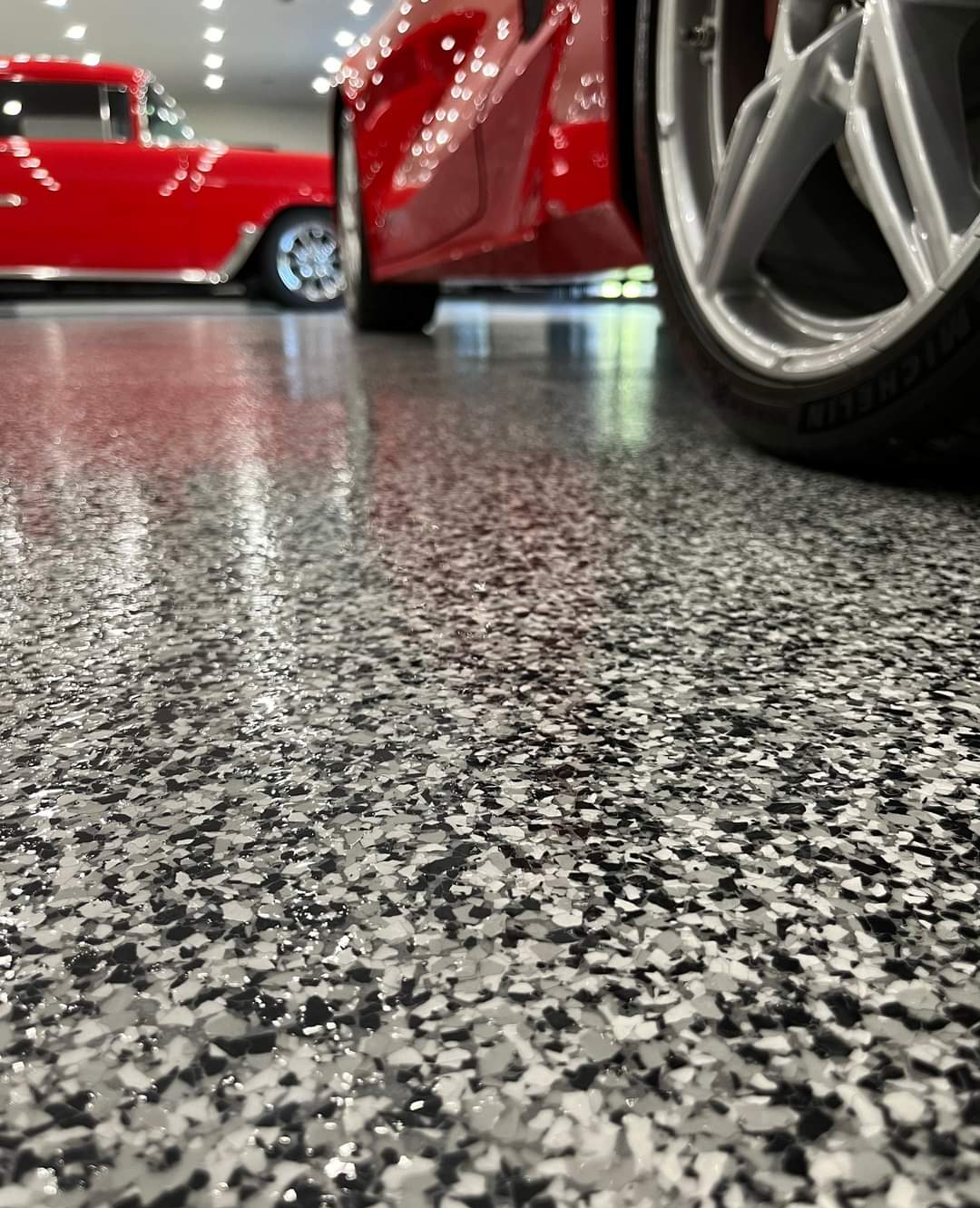
Types of Epoxy Floors
There are many different types of epoxy floors, each with its own advantages and disadvantages.
We'll take a look at a number of them in this section
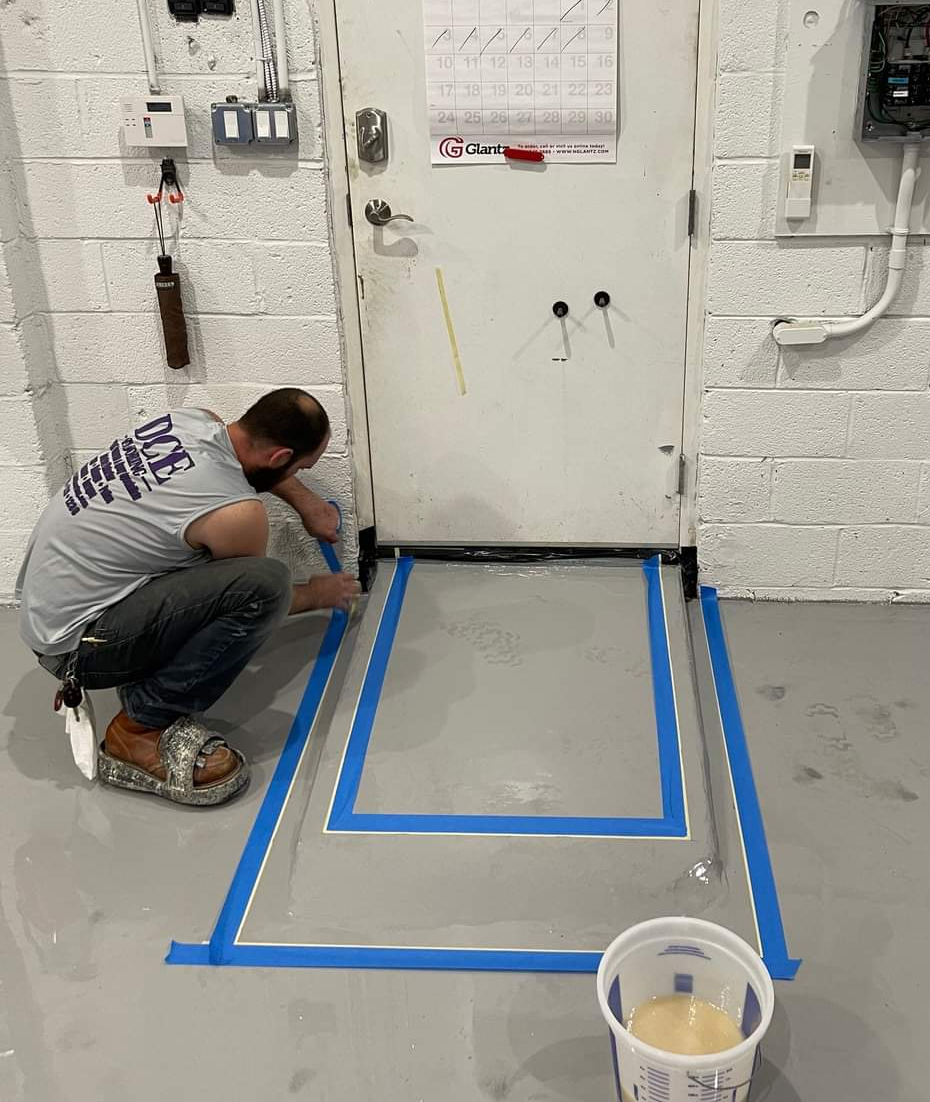
Self Leveling
Self-leveling epoxy floors are a type of floor coating that is applied as a liquid and then hardens into a smooth, level surface.
This type of flooring is often used in commercial and industrial settings because it is durable and easy to maintain. However, self-leveling epoxy floors can also be used in residential homes.
One advantage of self-leveling epoxy floors is that they are very low maintenance. Once the floor coating has been applied, it does not require any special cleaners or upkeep.
Another advantage of self-leveling epoxy floors is that they are slip-resistant and easy to clean.
Spills can simply be wiped up with a damp cloth, and the floor will retain its shining finish for years to come.
Self Dispersing
Self-dispersing epoxy floors are a popular choice for customers who want a high-quality, durable flooring option.
These floors are made with epoxy resin, which is a strong, durable material that can withstand heavy traffic and wear.
The epoxy is combined with a self-dispersing additive that helps to spread the material evenly across the floor.
This results in a floor that has a smooth, even surface with no ridges or bumps.
Self-dispersing epoxy floors are also easy to clean and maintain, making them an ideal choice for customers who want a low-maintenance flooring solution.
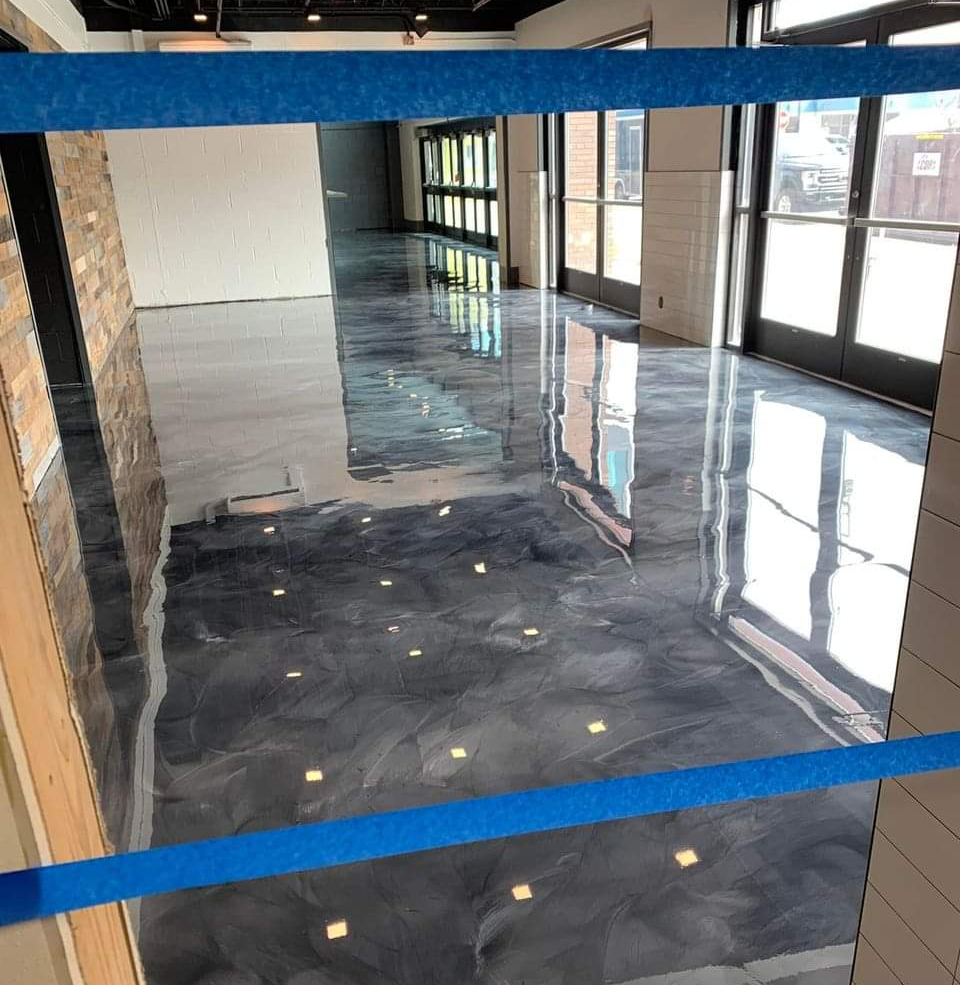
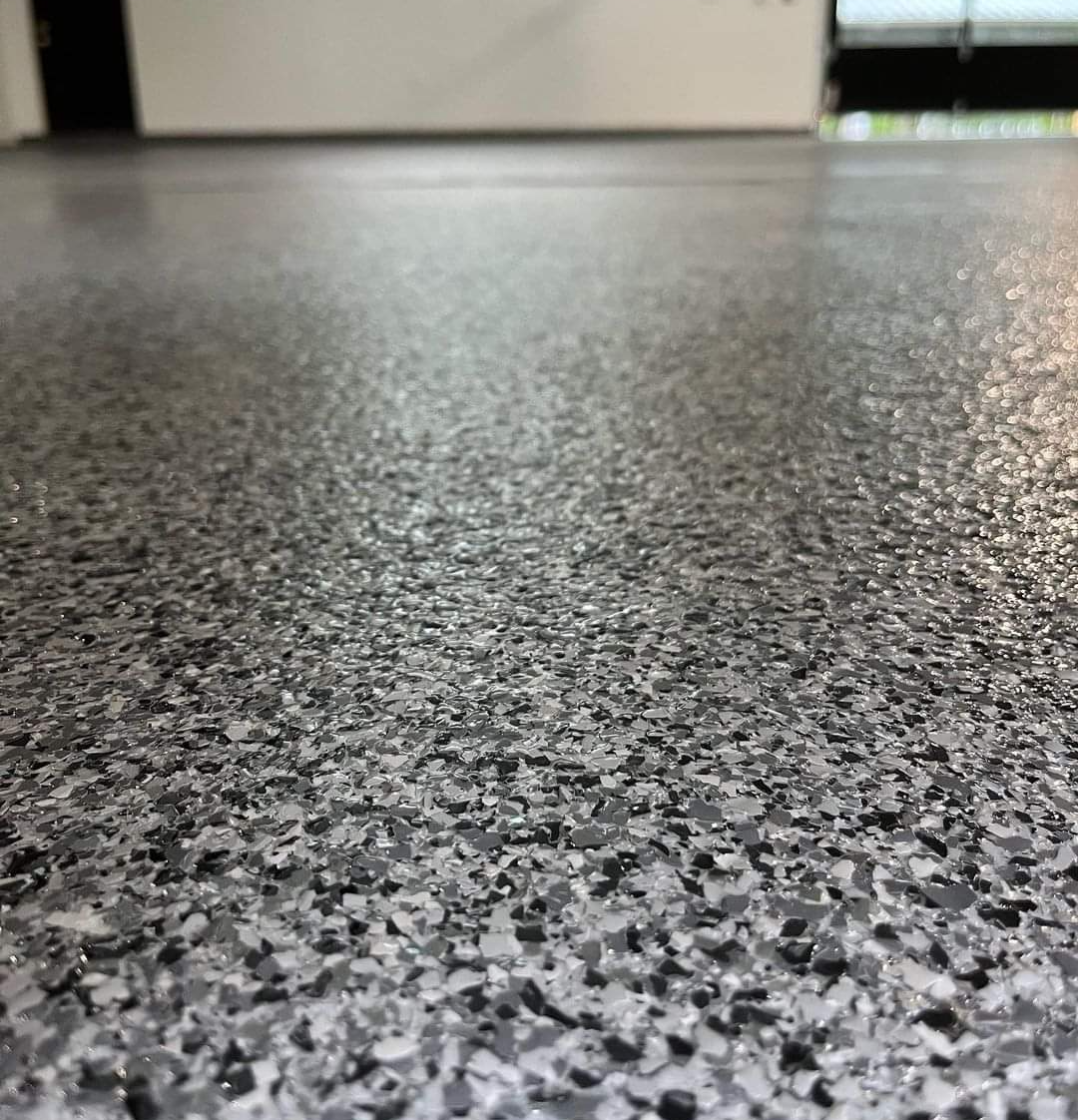
Mortar
Mortar epoxy floors are a type of industrial flooring that is extremely durable and easy to clean.
Customers choose them for a variety of reasons, including their resistance to chemicals, impact, and abrasion.
They're also easy to maintain and can be customized with a variety of colors and patterns.
In addition, mortar epoxy floors are fire-resistant and slip-resistant, making them ideal for a wide range of applications.
Whether you're looking for an attractive floor for your retail space or a durable surface for your warehouse, mortar epoxy floors are an excellent option.
Quartz Filled
Quartz filled epoxy floors are a popular choice for many customers because of their durability and aesthetic appeal.
Quartz is added to the epoxy resin mixture, which gives the floor a slip-resistant finish with a bit of sparkle.
In addition to being attractive and durable, quartz filled epoxy floors are also easy to maintain.
They can be swept and mopped like any other type of hard surface floor, and they don’t require any special cleaning products or procedures.
For these reasons, quartz filled epoxy floors are an excellent choice for both commercial and residential applications.
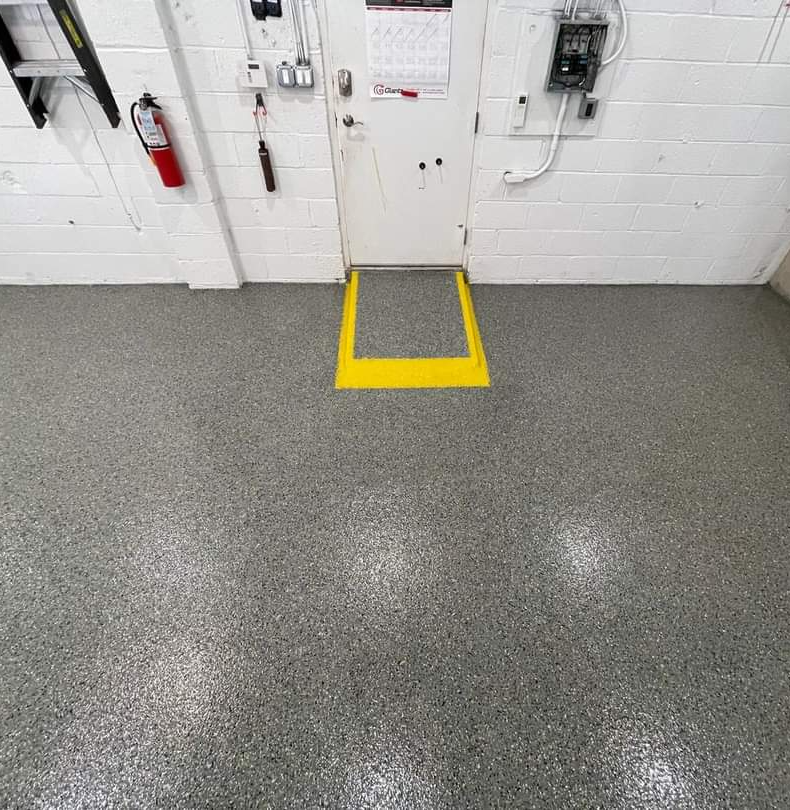
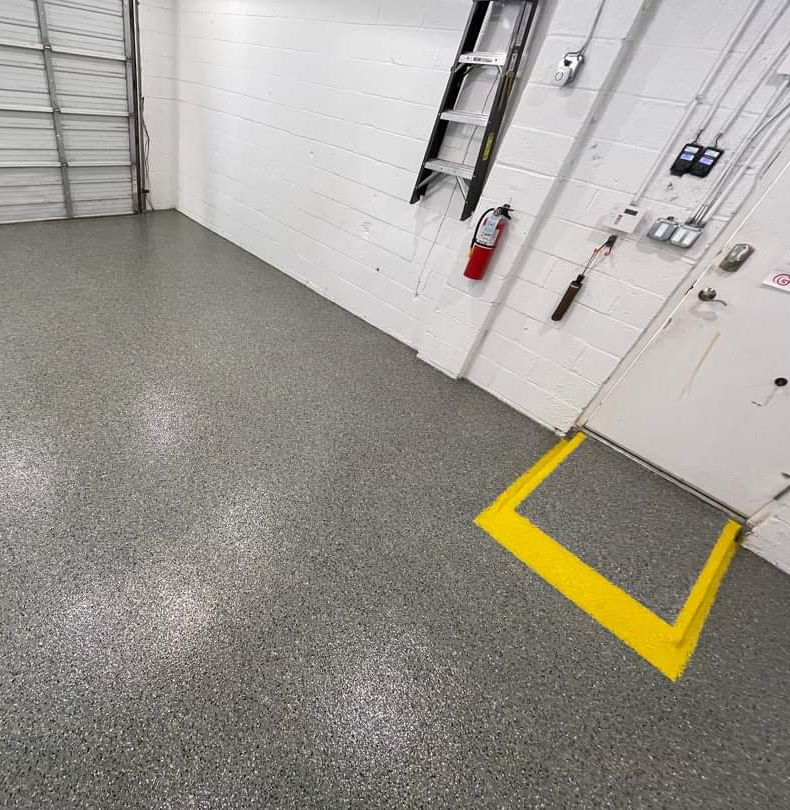
Flaked
Customers choose flaked epoxy floors for a variety of reasons. One reason is that the flooring is extremely durable.
The flakes create a textured surface that is slip-resistant, making it ideal for high-traffic areas. In addition, the flooring is easy to clean and maintain.
The flakes also provide a bit of insulation, which can help to reduce noise levels.
Another reason customers choose flaked epoxy floors is that they are available in a wide range of colors and styles.
The flakes can be combined to create a unique and customized look.
Terrazzo
Terrazzo epoxy floors are a type of flooring that consists of chips of marble, quartz, or granite set in a bed of epoxy.
The epoxy is then polished to create a smooth, hard surface.
Terrazzo epoxy floors can be customized with inlays or logos to create a unique look.
While terrazzo epoxy floors may have a higher upfront cost than other types of flooring, they can last for decades with proper care.
As a result, many customers find that terrazzo epoxy floors are a wise investment for their home or business.
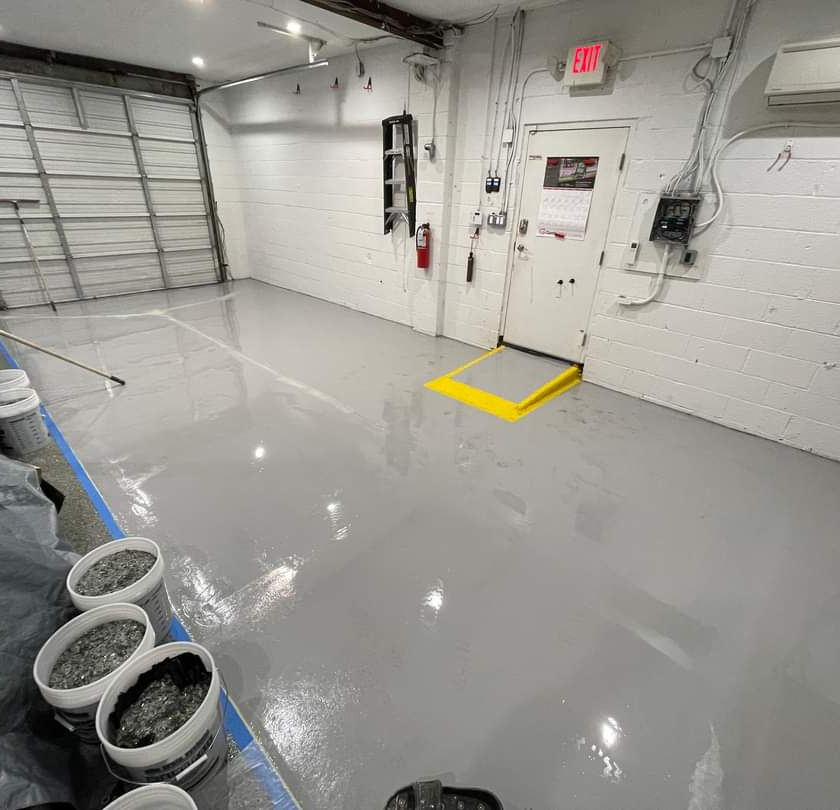
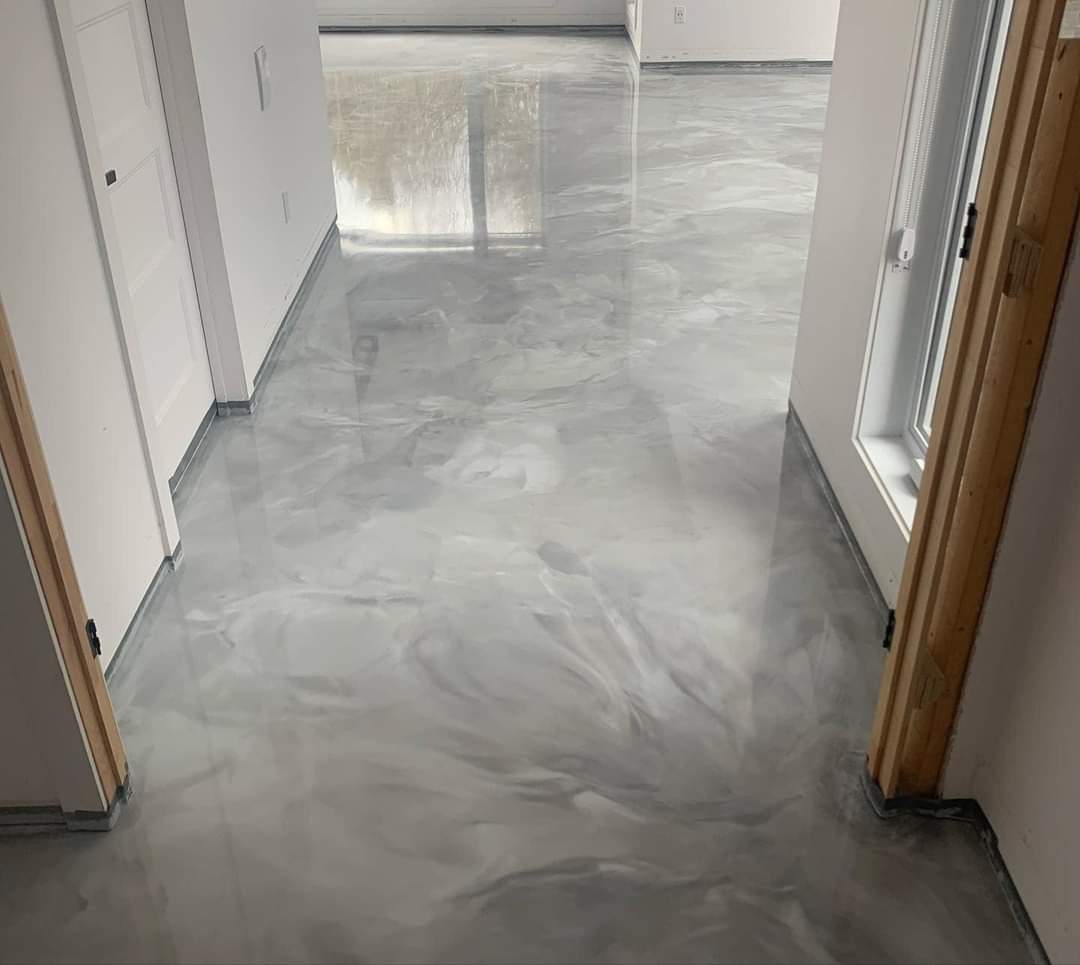
Anti-Static
Anti-static epoxy floors are a type of flooring that is commonly used in areas where electronic equipment is present.
The main reason for this is that the epoxy material used in these flooring products helps to dissipate static electricity, which can damage sensitive electronic components.
In addition to protecting electronic equipment, anti static epoxy floors also offer a number of other benefits.
They are extremely durable and easy to clean, and they can be personalized with a wide variety of colors and designs.
Benefits of Epoxy Flooring
There are many benefits to having epoxy flooring installed in your home, garage or business.
Epoxy flooring is extremely durable and resistant to scratches, stains and spills.
It is also easy to clean and maintain, making it an ideal choice for high-traffic areas.
In addition, epoxy flooring can help to improve the look of your space by creating a smooth, glossy finish.
It is also available in a variety of colors and can be customized to match your specific style.
Whether you are looking for a new floor for your home or business, epoxy flooring is an excellent option that will provide you with lasting beauty and durability.
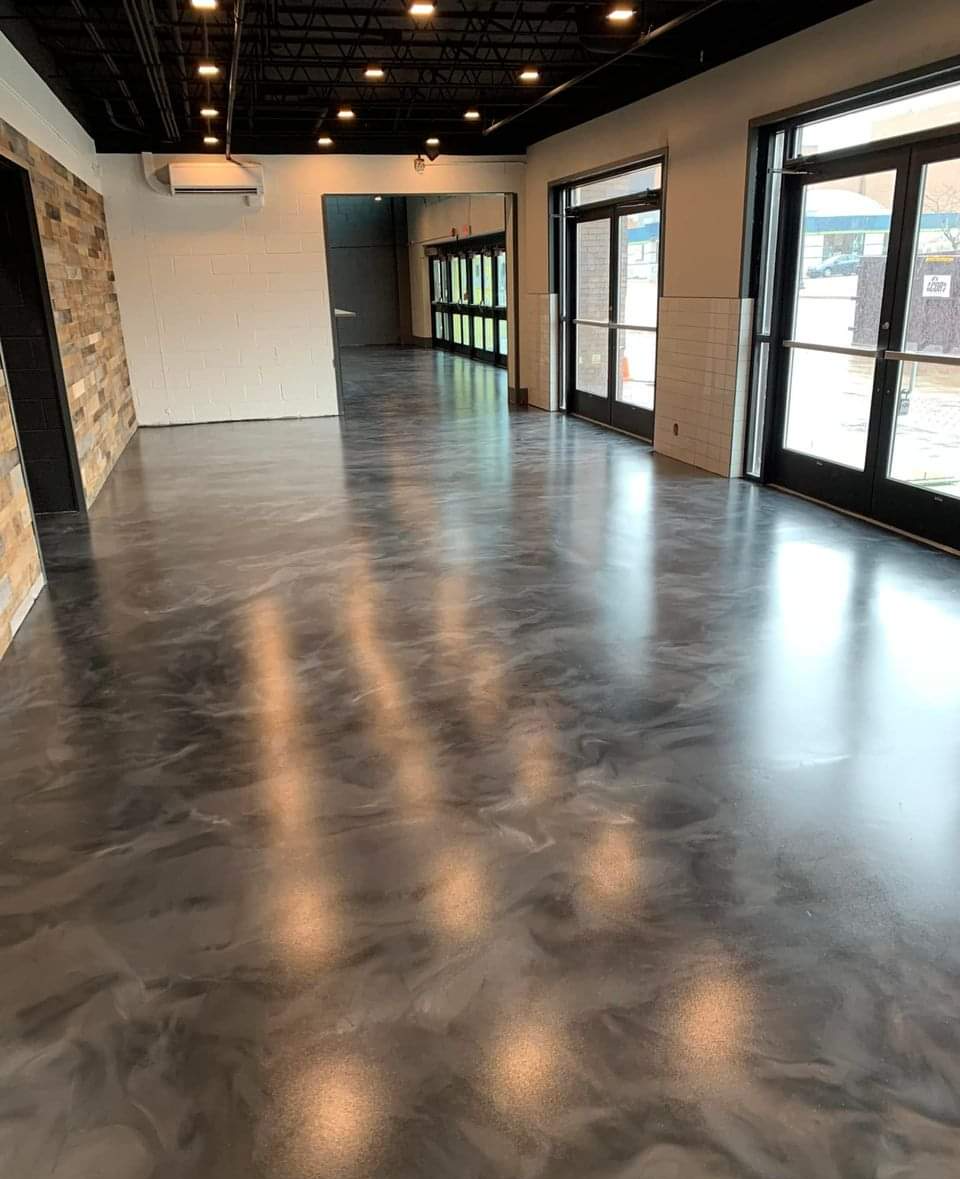
Epoxy Flooring Installation Process
Epoxy flooring installation is a complicated and scientific process.
Our epoxy flooring installation process is sure to leave you with a beautiful and durable floor that will last for many years to come.
We will describe our process in the following section.
Choose an Epoxy Flooring Solution
Choosing your epoxy floor product & style is critical to ensuring a successful installation.
Our experienced team can help you select the right product and style for your project, and we'll even provide a free estimate.
This step is crucial because it determines the timeline and game plan for installing your epoxy floor.
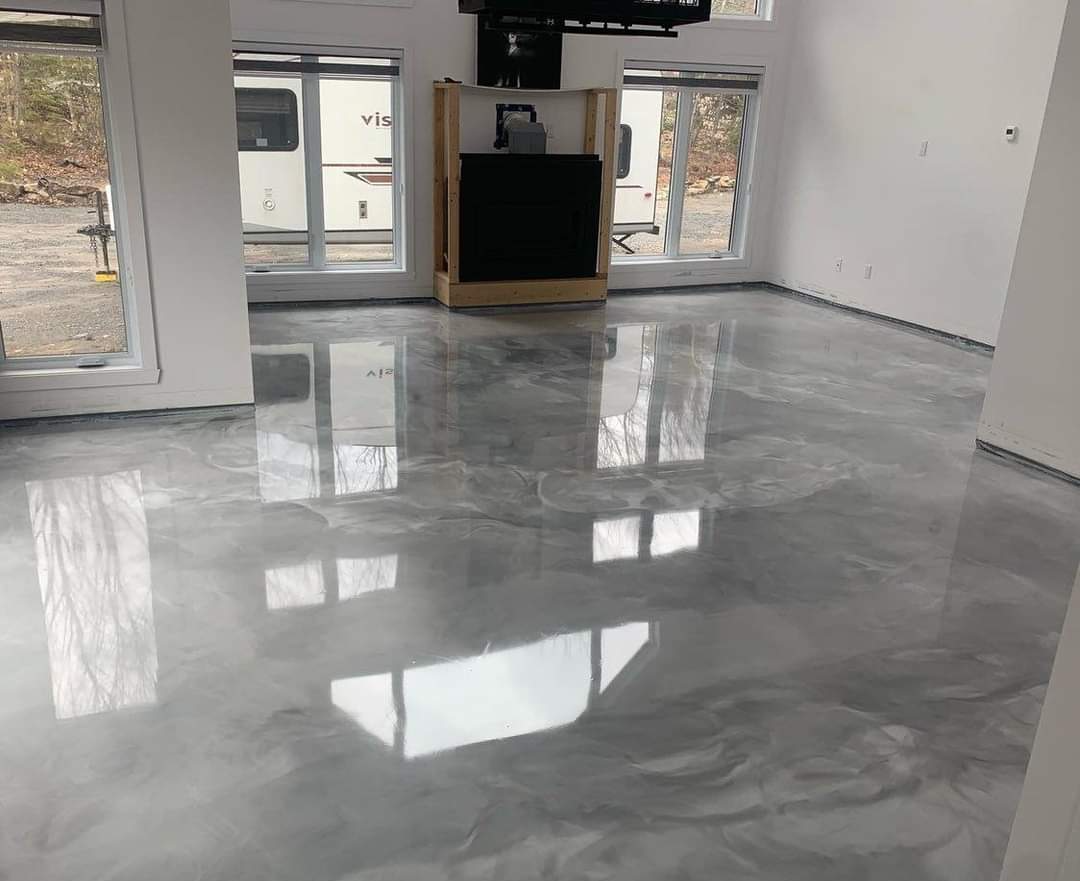
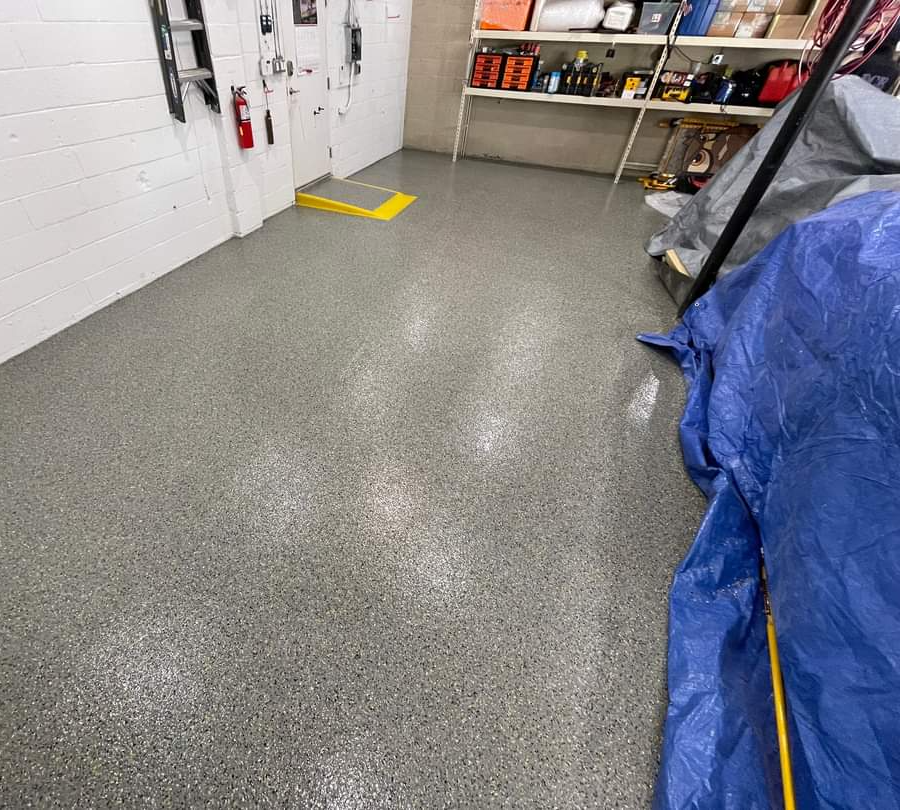
Material Preparation
The second step in this process is to gather the materials needed for proper resin mixing and installation.
This includes a mixing bucket, measuring cups, stir sticks, and gloves.
We also make sure to have our scales, spiked shoes, safety equipment, paddle mixer and more.
Don't forget the cleaning equipment, glue gun, sealant or caulk and the epoxy itself!
It takes a lot of material and equipment to do the job right.
Measurements & Calculation
The third step in the process is for us to do our measurements and calculations.
This will help determine how much epoxy we need to cover the entire floor.
Once we have our measurements, we'll do our calculations as to exactly how much epoxy we need in order to do the job properly and successfully the first time around.
When we've gotten all our numbers and triple-checked them, we can move on to the next step.
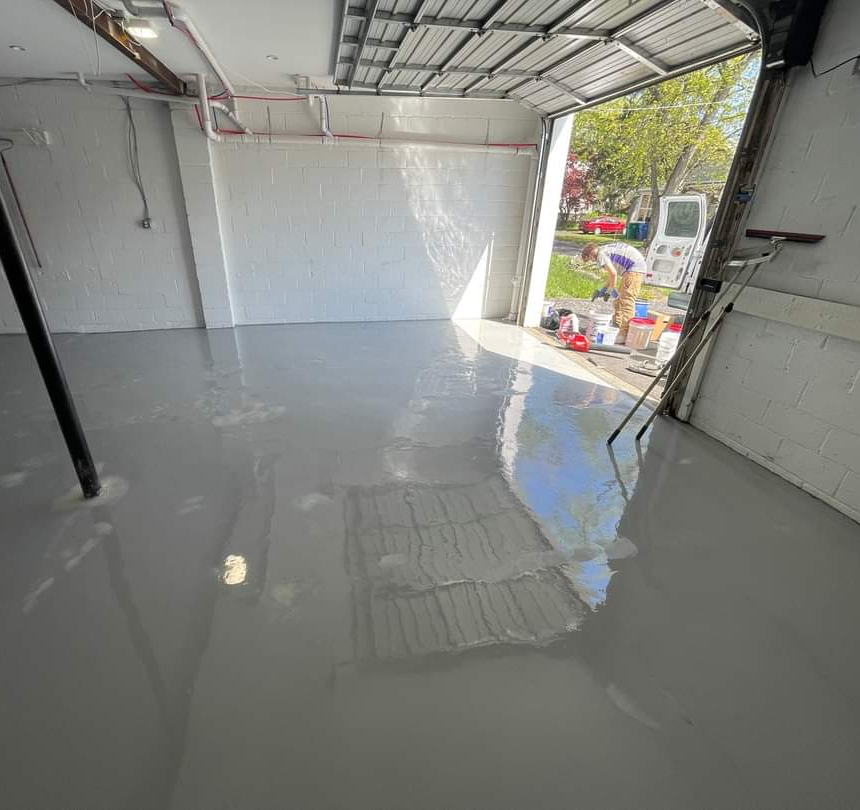
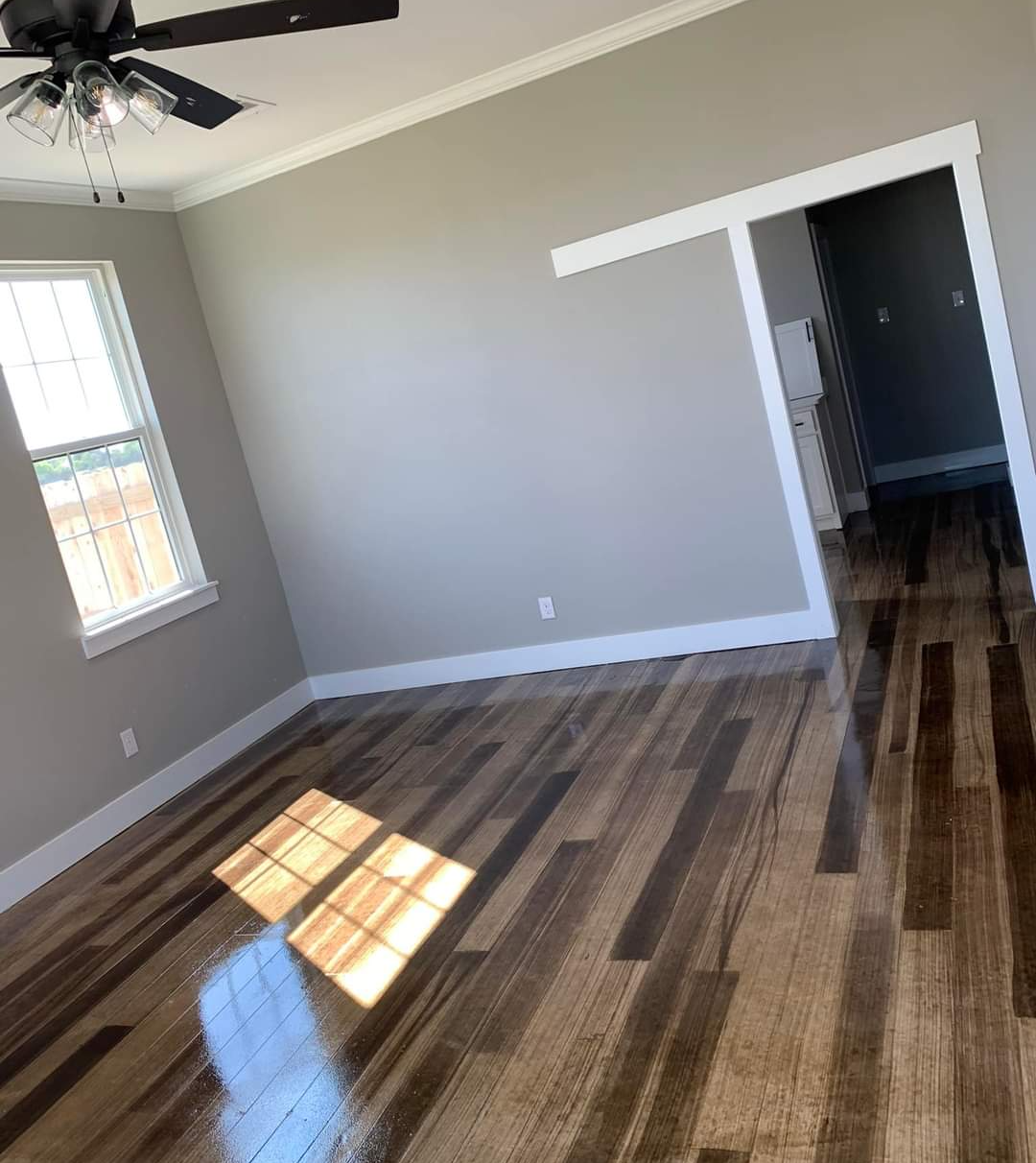
Room & Climate Preparation
Once we've gathered all the materials we need for your epoxy flooring installation, the next step is to prepare the room.
This involves cleaning the floor thoroughly, sealing off any openings to prevent dust and debris from entering, and ensuring that the temperature and humidity are within the ideal range.
If the room is not properly prepared, it can result in a poor quality finish or even damage to the epoxy coating.
However, taking the time to do things right from the start will pay off in the end, with a beautiful and durable floor that will last for years to come.
Flooring Preparation
The fifth step in the epoxy flooring installation process is to prepare the floor itself.
This step is important because it ensures that the epoxy will adhere properly to the surface.
The first step is to clean the floor thoroughly, using a broom or vacuum to remove any dirt, dust, or debris.
Next, any cracks or holes in the floor should be filled with a suitable filler such as concrete patch. Once the filler has set, the surface should be sanded smooth.
Finally, any remaining grease or oil should be removed with a degreaser before the epoxy is applied.
By taking the time to properly prepare the floor, we can ensure that your epoxy flooring will look great and last for years to come.

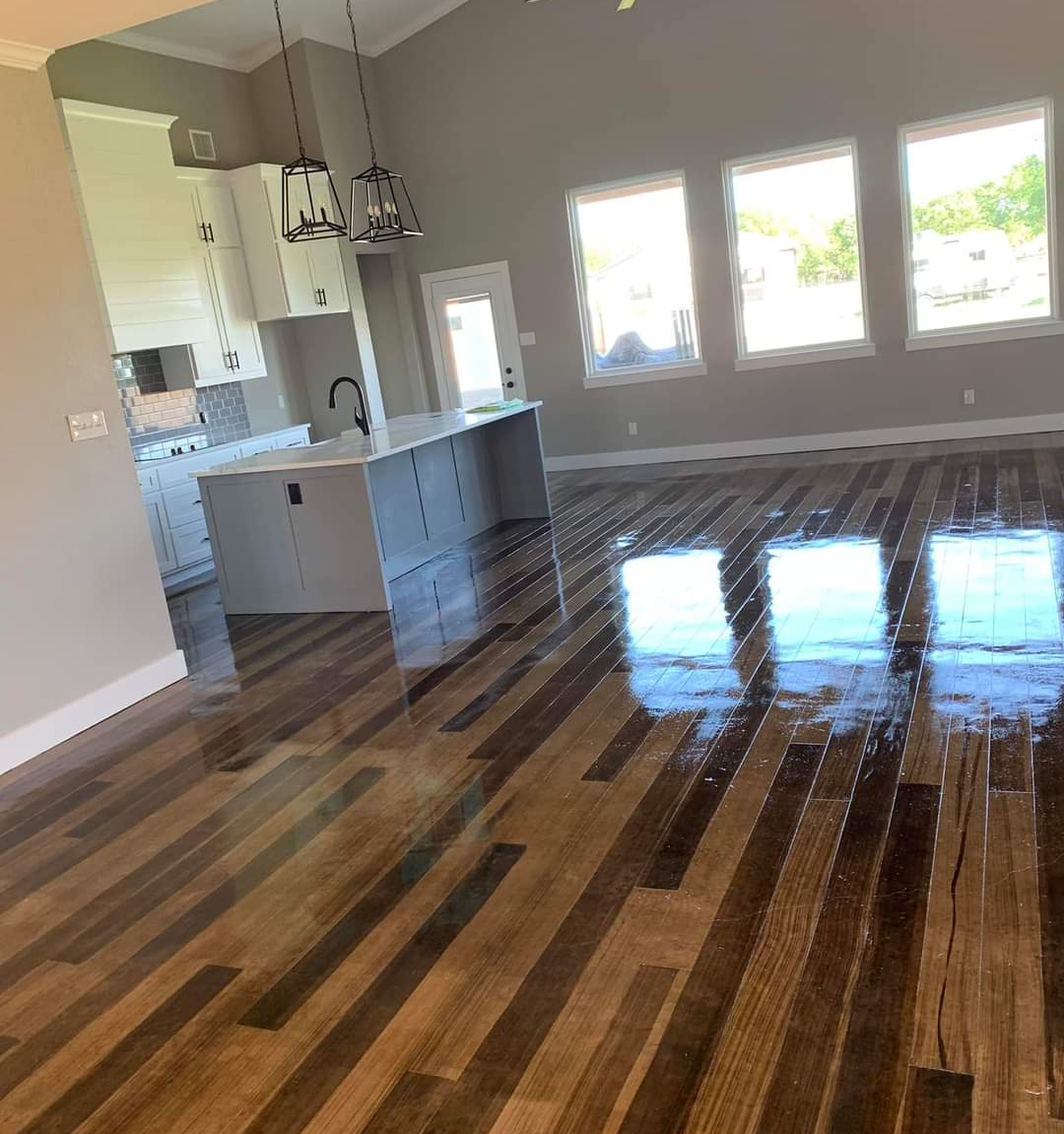
Mixing & Pigmenting Resin
The sixth step in the epoxy flooring installation process is to mix the epoxy resin and add any necessary pigment or substrate to the compound.
The resin and hardener are typically mixed in a ratio of two parts resin to one part hardener, though this ratio can vary depending on the specific product being used.
Once the resin and hardener have been mixed, any pigment or other substrate should be added to the compound.
Once all of the ingredients have been added, the mixture should be stirred thoroughly to ensure that everything is evenly distributed.
Pouring & Curing Resin
The seventh step in the epoxy flooring installation process is pouring the resin itself, and then allowing it to cure.
Once the resin and hardener are mixed together, they will begin to react and will become hot.
The heat helps to cure the epoxy and make it hard.
The amount of time that it takes for the epoxy to cure will vary depending on the temperature and humidity of the room.
In most cases, it will take 24 hours for the epoxy to fully cure. Once it has cured, it will be hard and durable.
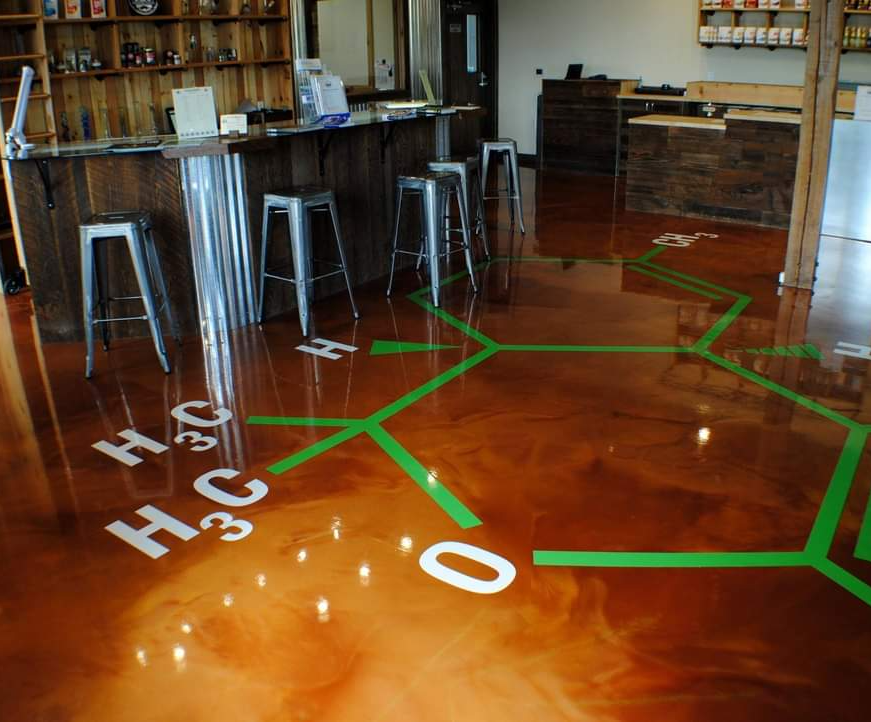
After Care
The final step in the epoxy flooring installation process is performing any after care steps.
This can include cleaning the floor with a mild detergent, mopping it with a damp mop, and allowing it to dry completely.
It is also important to keep the floor free of dirt, dust, and debris, as these can all cause the epoxy to fail.
With proper care and maintenance, an epoxy floor can last for many years.
How to Maintain Epoxy Floors
Epoxy floors are becoming increasingly popular in both commercial and residential settings.
Thanks to their durability and easy maintenance, epoxy floors offer a number of benefits over traditional flooring options. Here are a few tips for keeping your epoxy floors looking their best:
First, sweep or vacuum your epoxy floors on a regular basis to remove any dirt or debris. If you live in an area with high humidity, you may also need to mop your floors occasionally to prevent moisture from damage.
Second, when spills occur, be sure to clean them up as quickly as possible. Epoxy is highly resistant to staining, but it’s still important to wipe up any spills before they have a chance to set.
Finally, if you notice any cracks or chips in your epoxy floor, be sure to repair them as soon as possible. This will help to prevent further damage and keep your floors looking like new.
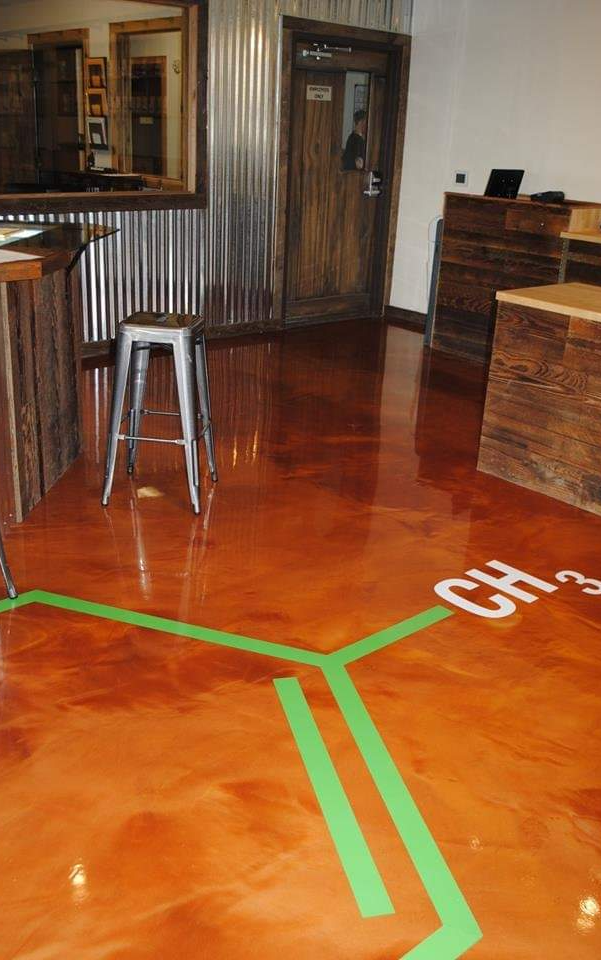
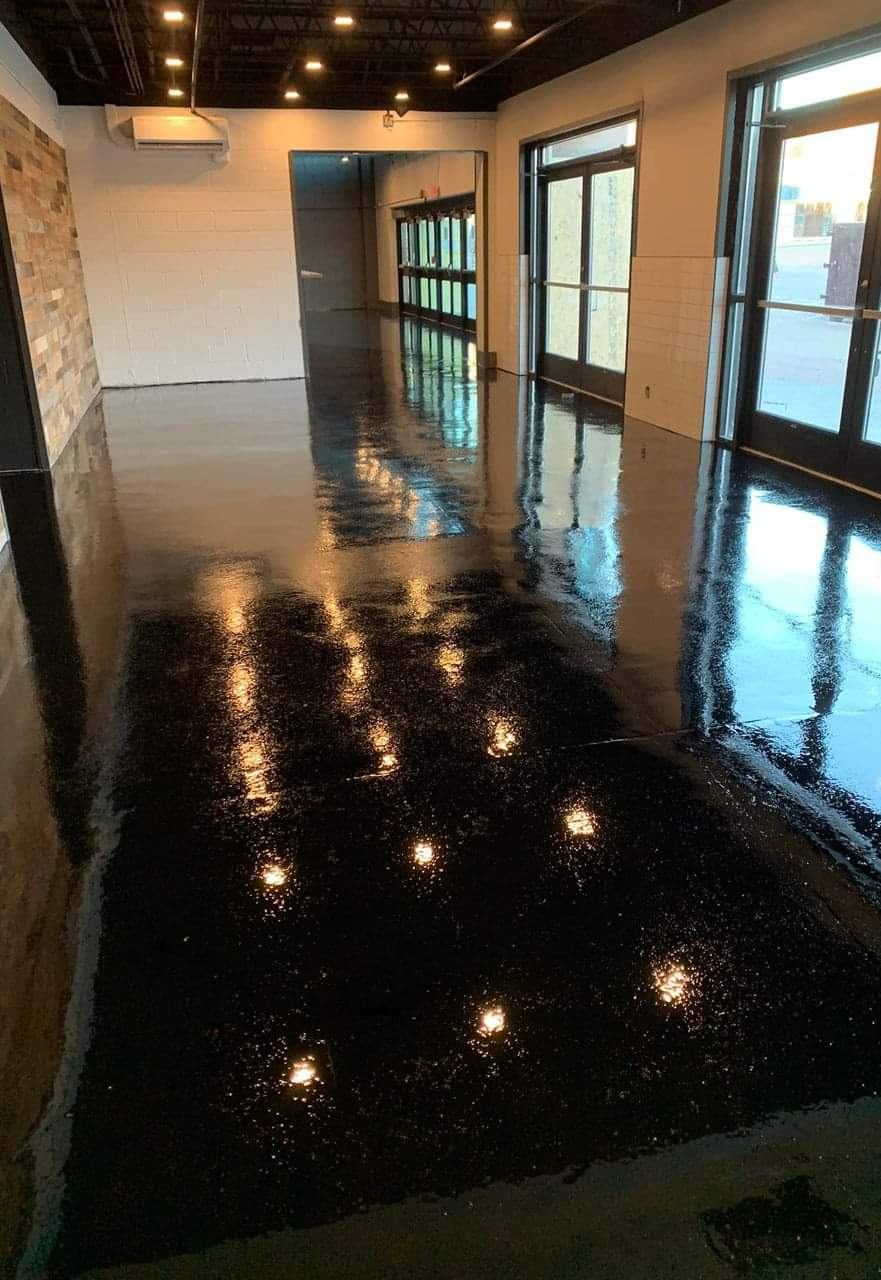
How Much Does it Cost to Install Epoxy Flooring?
The cost of epoxy flooring installation can be affected by a number of factors, including the type of epoxy being used, the size of the area being covered, the surface that needs to be prepared, and the amount of curation required.
For example, self-leveling epoxy is typically more expensive than traditional epoxy because it requires less time to install and doesn't need to be applied as thickly.
Similarly, covering a large area will generally be more expensive than a smaller one because more material will be needed.
Finally, installing epoxy flooring over an existing concrete floor is typically cheaper than installing it on top of another type of surface.
As a result, the cost of epoxy flooring installation can vary widely depending on the specific project.
Epoxy Floor Installation FAQs
How long will an epoxy floor coating last?
Epoxy floor coatings are designed to provide a durable, long-lasting surface. When properly applied, an epoxy coating can last for many years.
However, the length of time that an epoxy coating will last will depend on a number of factors, including the type of epoxy used, the quality of the installation, and the amount of traffic the floor is subjected to.
For example, a high-quality epoxy coating that is installed in a low-traffic area is likely to last much longer than a lower-quality coating that is installed in a high-traffic area.
In general, however, you can expect an epoxy floor coating to last for several years with proper care and maintenance.
What are the disadvantages of epoxy flooring?
There are several disadvantages to epoxy floors that should be considered before choosing them for a home or office.
First, epoxy floors can be very slippery when they are wet, which can increase the risk of slips and falls.
Second, epoxy floors can be difficult to repair if they become damaged.
Third, the fumes from epoxy floors can be harmful to respiratory health, so it is important to ensure that the area is well-ventilated during and after installation.
How do you calculate how much epoxy you need?
Epoxy comes in two parts - the resin and the hardener. The ratio of these two components will determine the strength of the bond. For most projects, a 1:1 ratio is sufficient.
However, for very large areas or very dense materials, a 2:1 ratio may be necessary. Once you have determined the appropriate ratio, you can calculate the amount of each component that you will need using the following formula: Area (in square inches) x Ratio x Number of coats = Total Amount Needed.
For example, if you are covering a 10 square inch area with a 1:1 ratio and you are applying two coats, you would need 20 square inches of epoxy.
Once you have mixed the two parts together, you will have a limited time to apply it before it begins to set.
Therefore, it is important to calculate the amount needed ahead of time so that you do not run out in the middle of your project.
What about the huge crack in my garage floor?
Before you can enjoy the benefits of an epoxy floor, the surface must be prepared. This includes ensuring that the floor is clean, smooth, and free of any defects. Otherwise, the epoxy may not adhere properly or may not cure correctly.
Cracks in concrete floors are a common issue that can impact epoxy flooring installation. If the crack is small, it can be filled with an epoxy filler before the coating is applied.
However, if the crack is large or deep, it will need to be repaired before installation can begin.
In some cases, this may require calling in a professional. The bottom line is that cracks in your garage floor can impact your epoxy flooring installation, but they can usually be addressed with a little time and effort.
Where can I install epoxy flooring?
Epoxy flooring can be installed over concrete, wood, or metal surfaces.
It is important to ensure that the surface is clean, smooth, and free of any debris before installation begins.
Once the surface has been prepared, the epoxy flooring can be applied in thin layers.
Once the desired thickness has been achieved, the flooring will need to be left to curing for a period of time before it can be used.
How long will the epoxy floor installation process take?
The epoxy floor installation process usually takes around two days to complete.
However, this can vary depending on the size of the area and the number of coats being applied. During the first day, the floor will be prepared by cleaning and repairs as needed.
Once the surface is prepped, the epoxy resin will be applied in a thin layer. This layer will then need to cure for several hours before a second coat can be applied.
Once the final coat has been applied, the floor will need to cure overnight before it can be used. Although the total installation time can vary, most epoxies will be fully cured within 24 hours.
Reach Out For a Free Quote
Send us a message using the form below, and we’ll get back to you as soon as we can.
We will get back to you as soon as possible
Please try again later
Copyright © 2015-2022 JD Flooring Installers | All rights reserved
Contractor Website by Curated Leads

